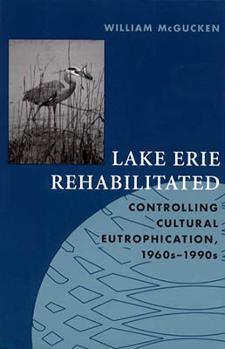McGucken, William. Lake Erie Rehabilitated: Controlling Cultural Eutrophication, 1960s–1990s. Akron: University of Akron Press, 2000.
During the 1960s, inland bodies of water in North America and Europe experienced a dangerous transformation. Nutrients were dumped into the lakes, causing chain reactions which severely impacted on lake environments. The excessive increase of nutrients into inland waters through human activity, known as cultural eutrophication, emerged as a dominant problem. Massive algae blooms drifted in overnourished lakes, depleting oxygen, damaging fish stocks, and transforming the water’s ecosystem. In Lake Erie Rehabilitated, historian William McGucken presents a comprehensive account of the most notorious international incident of cultural eutrophication—Lake Erie. With the assistance of the International Joint Commission, Canada and the United States diagnosed phosphorus as the primary cause of the problem and, in a unique cooperative effort, reduced input to the lake from municipal and industrial wastewater plants and agricultural lands. Public pressure and government regulation encouraged the reluctant detergent industry to produce alternative detergents and, finally, reduced the input of phosphorus to targeted levels. — University of Akron Press website. http://www.uakron.edu/uapress/browse-books/book-details/index.dot?id=1462903.


